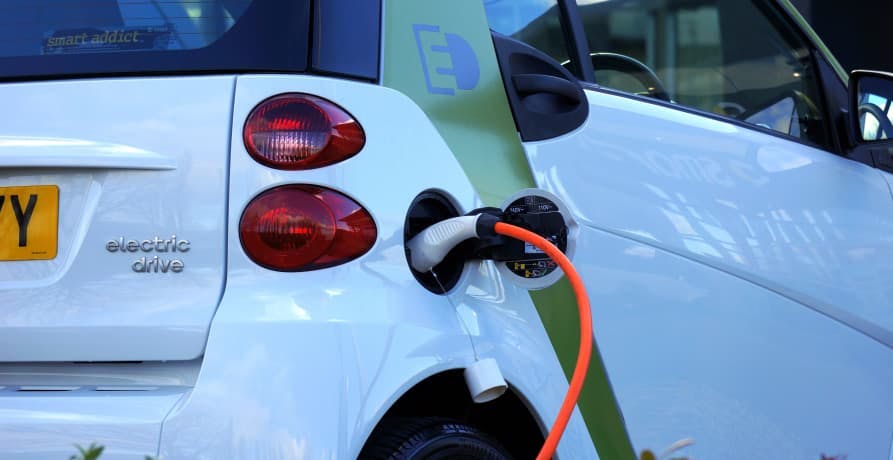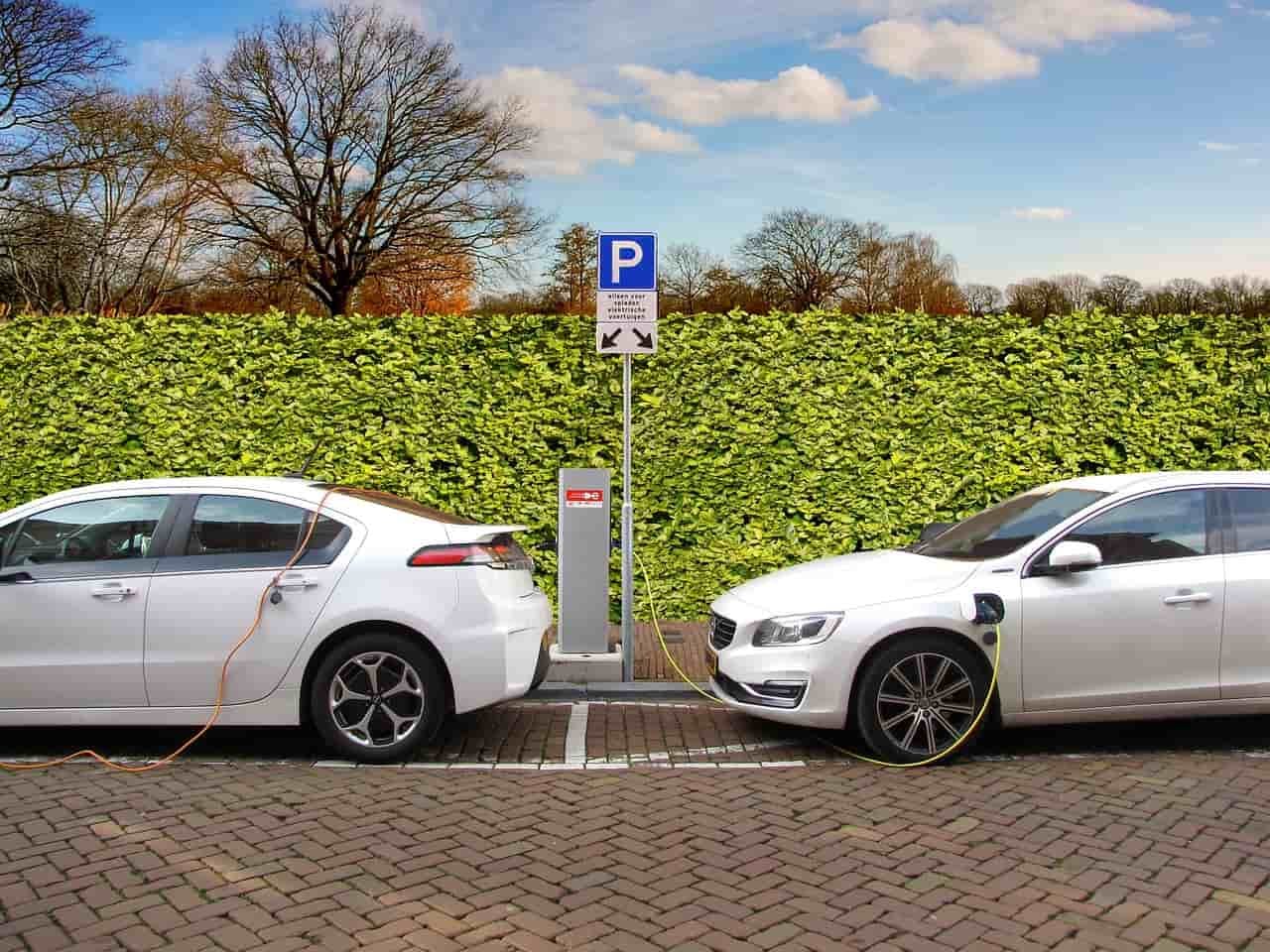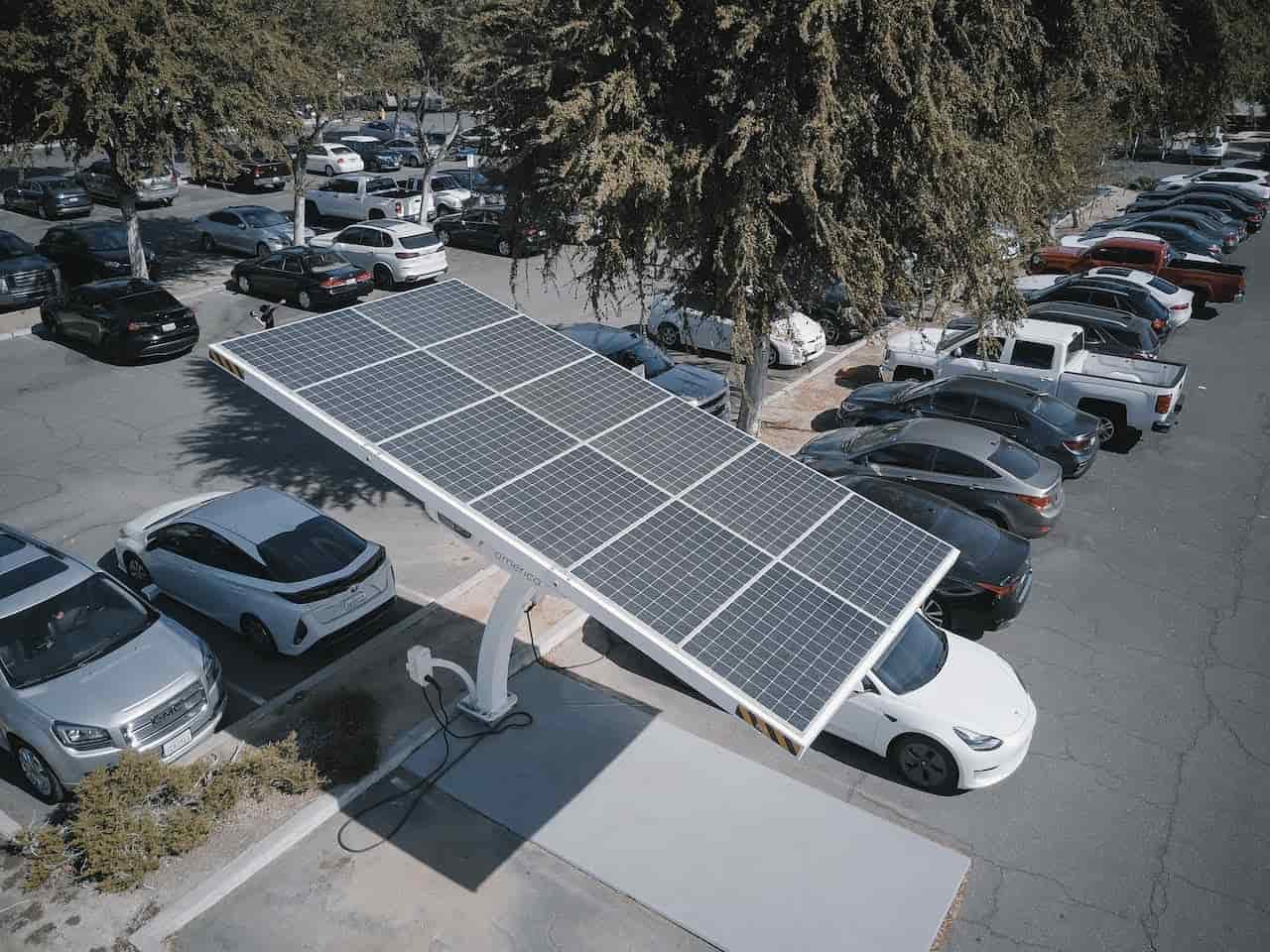ESG / CSR
Industries
Electric Cars: Are They Really Ecological?



Electric cars and electric vehicles (EVs)are designed to be an eco-friendly alternative to those that run on fossil fuels. This has led global leaders and car makers to embrace electric vehicles as part of their carbon emission reduction strategies.
General Motors, for example, has gone so far as to announce that it will only sell electric cars and light trucks by 2035 and that it will completely transform its manufacturing to battery-powered designs. Similarly, Volvo plans to pivot to electric-only new car sales by 2030.
Yet, no industry comes without an environmental footprint.
Some people have raised legitimate concerns that mining rare earth minerals for electric car batteries could put biodiverse regions at risk. Others have noted that we don't have a cost-effective means to recycle electric car batteries.
Does this mean that electric cars are worse than regular cars? Experts say no, but they do have some important environmental pitfalls that need to be addressed.
👉 In this article, we examine the environmental impacts of electric cars, discuss strategies to mitigate these effects, and debunk common myths surrounding their use.
What are electric cars?
Just like your average automatic transmission car, an electric vehicle powers on with ignition, accelerates with the acceleration pedal, and stops with the brakes. The main difference between an EV and a fossil-fuel-powered car is the design of its motor.
Electric vehicles are powered by batteries which must be periodically re-charged using a charging station connected to an electricity power source. This is familiar to most people because it's the same way we charge our phones, computers, and other electronic devices and appliances.
Most electric vehicles use a lithium-ion battery with a relatively simple design. In fact, there are only 20 moving parts in an EV motor versus almost 2,000 in the engine of a comparable internal combustion engine (ICE) vehicle.

How do electric cars work?
Electric cars, or EVs (Electric Vehicles), operate solely on electrical energy, eliminating the need for petrol or diesel. The fundamental components of an EV include the electric motor, battery pack, inverter, and various control systems. Here’s a detailed look at how they work:
- Electric motor: The heart of an EV is its electric motor, which can be either an AC (Alternating Current) or DC (Direct Current) motor. The motor converts electrical energy from the battery into mechanical energy, driving the wheels. This process is highly efficient, with electric motors often achieving efficiency rates above 77%. For comparison, conventional petrol vehicles only convert between 12% and 30% of the energy stored in the fuel into power!
- Battery pack: The energy source for the motor is a large battery pack, typically composed of numerous lithium-ion cells. These batteries store the electrical energy needed to power the vehicle. Modern EVs have battery management systems (BMS) to monitor and manage the performance, safety, and longevity of the battery pack.
- Inverter: The inverter plays a crucial role by converting the DC power from the battery into AC power if the motor is an AC motor. It also manages the power flow during braking and other driving conditions to ensure optimal efficiency.
- Drivetrain: Unlike internal combustion engine (ICE) vehicles that require a complex transmission system to manage power distribution and gear shifts, EVs tend to be much simpler. The motor is directly connected to the wheels via the drive shafts, allowing for smooth and instantaneous acceleration.
- Regenerative braking: One of the innovative features of EVs is regenerative braking. When the driver applies the brakes, the electric motor reverses its function, acting as a generator. It converts the kinetic energy of the vehicle back into electrical energy, which is then fed back into the battery. This process not only helps in extending the range of the vehicle but also reduces wear on the braking system.
- Charging: EVs are charged by connecting to an electrical power source through a charging port. There are various types of chargers, from slow home chargers (Level 1 and Level 2) to fast public chargers (Level 3 or DC fast chargers). The charging infrastructure is a critical aspect of EV usability and convenience.
- Key differences between electric vehicles and fuel-powered vehicles:
| Quieter Operation | Electric cars operate much more quietly, providing a smoother and more pleasant driving experience. |
| Instant Torque and Faster Acceleration | Electric motors provide instant torque, resulting in rapid acceleration without the need for gear shifts. |
| Maintenance | Fewer moving parts in EVs mean lower maintenance requirements compared to gasoline vehicles, which have complex engines and transmission systems. |
| Energy Efficiency | EVs are more energy-efficient, converting a higher percentage of energy from the battery to drive the wheels compared to the energy conversion in internal combustion engines. |
| Environmental Impact | EVs produce no tailpipe emissions, significantly reducing their carbon footprint. However, the overall environmental impact depends on the source of electricity used to charge them. |
| Fueling Infrastructure | Instead of refueling at gas stations, EVs require charging infrastructure, which is rapidly expanding but varies in availability. |
| Running Costs | The cost per mile for driving an EV is generally lower than for gasoline vehicles due to cheaper electricity costs and lower maintenance expenses. |
The different types of electric cars
There are four main types of vehicles that utilize some form of electric power, each offering different combinations of electric and fuel power:
Fully Electric Vehicle (EV)
- Power Source: Fully powered by an electric motor.
- Charging: Requires plugging into a charging station to recharge the battery.
- Operation: Emits no tailpipe emissions, relying entirely on electricity for propulsion.
- Advantages: EVs are ideal for urban environments due to their zero emissions and quiet operation. Advances in battery technology are extending their range and reducing charging times.
Plug-in Hybrid Electric Vehicle (PHEV)
- Power Source: Combines a combustion engine with an electric motor.
- Charging: Needs to be plugged into a charging station to recharge the battery.
- Operation: Can run on electric power alone for short distances, switching to the combustion engine for longer trips or when the battery is depleted.
- Advantages: PHEVs offer the flexibility of electric driving for daily commutes with the backup of a combustion engine for longer journeys, making them a versatile option for varied driving needs.
Hybrid Electric Vehicle (HEV)
- Power Source: Integrates both a combustion engine and an electric motor.
- Charging: The electric motor is recharged through regenerative braking and the combustion engine.
- Operation: Uses the electric motor to assist the combustion engine, improving fuel efficiency and reducing emissions without requiring external charging.
- Advantages: HEVs provide improved fuel efficiency and lower emissions compared to conventional petrol or diesel vehicles, making them an excellent choice for reducing environmental impact without changing driving habits significantly.
Mild Hybrid Electric Vehicle (MHEV)
- Power Source: Features a small electric motor paired with a combustion engine.
- Charging: The electric motor is recharged by the engine and regenerative braking.
- Operation: The electric motor cannot drive the vehicle independently but supports the combustion engine by reducing fuel consumption and assisting with acceleration.
- Advantages: MHEVs enhance fuel efficiency and reduce emissions slightly, providing a cost-effective way to benefit from hybrid technology without the need for significant changes in driving or refueling practices.

What are hybrid vehicles?
Hybrid vehicles offer a practical solution for reducing petrol costs and minimizing environmental impact, especially in areas lacking extensive charging infrastructure.
Hybrid cars work by combining petroleum engines with electric motors to optimize fuel efficiency and reduce emissions. Depending on the design, they operate in several ways:
- Parallel hybrid: Both the petrol engine and the electric motor can drive the car, either simultaneously or independently. At low speeds, the vehicle may rely solely on the electric motor, switching to the petrol engine at higher speeds or when additional power is needed.
- Series hybrid: The petrol engine generates electricity to power the electric motor, which solely drives the wheels. This design effectively makes the petrol engine a generator for the electric system.
- Series-parallel hybrid: A combination of both parallel and series designs, allowing for more flexible power management.
Hybrids are classified based on the power contribution of the electric motor:
- Strong hybrids: The electric motor can drive the vehicle independently, providing significant power to reduce fuel consumption and emissions.
- Mild hybrids: The electric motor assists the petrol engine but cannot drive the car on its own. This system provides a boost during acceleration and enhances fuel efficiency.
Hybrid vehicles are popular for a number of reasons including:
- Reduced CO2 emissions: Hybrids emit less CO2 compared to conventional vehicles, contributing to a lower environmental footprint.
- Fuel efficiency: By combining electric power with petrol, hybrids use less fuel, offering significant savings over time.
- Cost savings: Lower fuel consumption translates to reduced operating costs, making hybrids economical in the long run.
- Regenerative braking: This feature allows hybrids to recover and store energy during braking, improving efficiency.
Technological Advancements
Recent advancements in hybrid technology include:
- Improved batteries: Enhanced battery life and efficiency provide longer electric-only ranges.
- Smart energy management: Advanced systems optimize the use of petrol and electric power for better performance and efficiency.
- Lightweight materials: The use of lightweight materials improves overall vehicle efficiency and performance.
👉 Hybrid vehicles represent a bridge between conventional petrol vehicles and fully electric cars, providing a balance of performance, efficiency, and reduced environmental impact. However, since they still rely on the use of fossil fuels, hybrids will also need to be phased out in order to decarbonize the transport sector.

What's the problem with cars?
Cars and vehicles are a major environmental concern due to their impact on air quality and energy consumption. Traditional petrol and diesel engines emit pollutants like carbon monoxide and nitrogen oxides, which degrade the air we breathe and contribute to health issues. Additionally, the high energy consumption from burning fossil fuels depletes non-renewable resources and increases greenhouse gas emissions.
These emissions are a significant driver of climate change, making it essential to reduce our reliance on fossil-fuel-powered vehicles to fight climate change. By shifting to electric vehicles and enhancing public transport, we can lower emissions and move toward a more sustainable future.
Are electric cars sustainable?
Electric cars are often seen as a sustainable alternative to traditional cars, primarily because they do not emit exhaust emissions such as carbon dioxide (CO2), as no fuel is burned. However, they still require electricity to operate, and in the UK, a significant portion of electricity (about 40.8%) is generated from burning fossil fuels.
US version: For now, a significant amount of electricity (about 60%) still comes from fossil fuel sources in the US.
To fully assess the sustainability of electric cars, it is essential to compare the greenhouse gas emissions produced during electricity generation for charging the vehicle versus those emitted by driving an internal combustion engine car. This comparison varies depending on the energy mix of a region or country. For example, driving an electric car in Iceland would result in almost no emissions from both operation and charging due to the country's reliance on renewable energy sources like wind, solar, geothermal, and hydro.
In the US, however, the picture is more complicated as the situation differs by state. For example, the state of Maine sourced 72% of its electricity from non-fossil fuel sources in 2021, while Texas relied on wind, solar, and nuclear for only 40% of its electricity. This means that driving an electric vehicle has a much lower environmental impact depending on where you live in the country.
Yet despite these country and regional variations, according to the European Energy Agency, even when accounting for greenhouse gas emissions from electricity generation, electric cars generally have a smaller carbon footprint than petrol cars. EV emissions tend to be between 17 and 30% lower than those of petrol or diesel cars.
👉 While the sustainability of electric cars depends on how the electricity they use is generated, they still represent a significant step towards reducing greenhouse gas emissions compared to traditional cars. As the energy grid becomes greener with more renewable sources such as wind and solar power, the carbon dioxide emissions associated with electric cars will continue to decrease, making them an increasingly sustainable option. Electric cars not only reduce direct emissions but also support the transition to renewable energy sources, contributing to a more sustainable future overall.
Is the manufacturing of electric cars ecological?
Another critical factor in electric car sustainability is their manufacturing practices. As with all vehicles, producing new electric vehicles requires raw materials. However, according to the Union of Concerned Scientists (a non-profit science advocacy organization), the manufacturing of electric cars emits more carbon emissions than that of a petrol or diesel car.
Unlike petrol-powered vehicles which use common metals and materials in their engines, most electric vehicles use rare earth elements such as lithium, nickel, cobalt, and graphite to manufacture the electric battery. Mining these elements requires carbon-intensive practices.
Another concern is that mining these rare earth metals comes with environmental trade-offs. About 60% of the reserves of cobalt are found in the Democratic Republic of Congo (DRC), where rainforests with rich biodiversity grow. Mining in these areas could threaten biodiversity.
It's estimated that half of the environmental impact of electric vehicles comes from producing their batteries. Addressing this issue involves improving battery technology, sourcing materials more sustainably, and increasing the use of recycled materials. As renewable energy becomes more prevalent in manufacturing processes, the overall environmental footprint of electric vehicle production is expected to decrease. Sustainable practices and advancements in technology are crucial for enhancing the overall sustainability of electric cars.
Given that all raw materials extraction presents difficult trade-offs, it's also important to consider the alternative: many remaining oil reserves also exist in protected areas.
For a direct comparison, however, the environmental impact of EVs improves over the lifetime of the vehicle compared to a conventional car. On average, the break-even point is reached after the EV has been driven between 17,500 and 21,300 miles (this means the break-even point arrives after approximately 1.5 to 2 years of driving). And considering that most vehicles are driven 200,000 miles in their lifetime, EVs end up being considerably better for the environment over their total lifespan.
What's more, is that consumer reports suggest EV batteries could last around 17 years or 200,000 miles. The average lifespan of a conventional car is only around 12 years.
In sum, about 10-15 years of an EV's lifespan would operate with a better carbon footprint than conventional cars, assuming no change to manufacturing or battery technology.
However, the end-of-life of batteries presents another ecological challenge...
Can electric car batteries be recycled?
Recycle rates of lead-acid batteries (ie. those found in traditional cars) are nearly 100% in developed nations. The US for example, recycles around 99% of its lead-acid car batteries, and other developed nations boast similar stats. This makes the end-of-life disposal of traditional car batteries more ecological than is currently the case for EVs.
Unfortunately, recycling lithium-ion batteries is a much less developed area. Lithium is found in such low traces within the batteries, that it is hard to recover. Globally, only 5% of lithium in batteries is estimated to be recovered.
As the market for EVs grows, more companies have shown interest in solving the problem of recycling batteries. Innovative companies are exploring solutions like mining them for their rare earth ingredients or repurposing them for renewable energy storage, helping to make electric cars greener.
Recycling and reuse of outmoded EV car batteries is a promising field that would help offset the environmental impacts of manufacturing the batteries, by extending their useful lifespan.
Electric car myths
Myth: Greenhouse gases released during the generation of electric power mean that electric cars are less environmentally friendly than conventional cars.
Fact: It depends on the energy mix of your region. Compare the different estimated greenhouse gas (GHG) emissions from different car types, in the US you can use the “Beyond Tailpipe Emissions Calculator” available on the US EPA website. In the UK, similar information can be found through the UK Government's Vehicle Certification Agency website.
Myth: An EV battery runs out of charge too quickly to manage daily commutes and travel needs.
Fact: The average driver in the US will travel around 37 miles per day. In the UK this number is lower at 20 miles per day. A fully charged EV can travel roughly 200 miles while charging at the station can deliver 100 miles of travel range. Therefore, for the average driver, electric vehicles should hold more than enough charge to cover daily commutes and travel needs.
To understand an EV's range expectations, you'll need to check the specific car model specifications.
Another factor impacting EV range is driver behavior and weather conditions. Cold temperatures can reduce driving range by up to 40%.
Myth: Electric car models are very limited.
Fact: A greater variety of electric cars is available. Manufacturers are developing them in a wide range of sizes, shapes, and hybrid vehicle options. Over 450 electric car models are available worldwide including Tesla's Cybertruck, which offers pick-up utility.
Myth: There aren't enough charging stations available.
Fact: The US currently has over 160,000 stations available and the UK has more than 45,000, with more being installed daily. However, a little-known fact is they can even plug into standard 120 V (Level 1) outlets. The technology for charging plug-in vehicles is no different from charging your iPhone.
However, most EV owners prefer 240 V charging systems, which can charge vehicles more quickly. Finally, a new generation of high-powered DC fast charging stations is also being built.
The charging rates for each are as follows:
- 120V plug-in: slow
- 240V plug-in: 10-20 miles of range per hour
- Fast-charging station: 60 miles of range per 20 minutes
Myth: The manufacturing process of electric batteries makes EVs worse for climate change than petrol-powered vehicles.
Fact: For new vehicles, this is true. However, the lifespan of an average vehicle is over ten years. Lifetime emissions for EVs are much lower.
While the precise comparison depends on the car model and useful lifespan for each car type, charging emissions, and more. In general, a 300-mile car range EV has roughly a third fewer emissions over its lifespan than a conventional car.
Myth: Electric cars are dangerous to drive.
Fact: All manufacturers are required to meet high safety standards. The standards between electric vehicles and conventional vehicles are no different in the US or UK.
EV batteries also undergo intense testing to meet safety standards for avoiding short circuits from water or other factors. Car batteries are designed to detect risks and automatically shut down to avoid collisions and short-circuits.

How Greenly Can Help Companies
Taking proactive steps in decarbonizing and adopting sustainable practices is crucial for long-term success. Greenly assists your company in embracing sustainability initiatives, ensuring you contribute positively to environmental stewardship.
Comprehensive Carbon Management
Greenly offers a range of services to help you effectively manage your carbon footprint:
- Measurement of GHG Emissions: Track Scope 1, 2, and 3 emissions using advanced technology for an understanding of your greenhouse gas footprint.
- Custom Action Plans: Develop tailored strategies with our climate experts, focusing on key areas for improvement and implementing effective changes.
Decarbonizing Your Supply Chain
Greenly helps you engage suppliers and transition to low-carbon options, achieving greater transparency and effectively managing Scope 3 emissions. Our sustainable sourcing initiatives build greener partnerships and reduce emissions throughout your supply chain.
Intuitive and Seamless Platform
Our user-friendly platform simplifies the process of calculating and monitoring your carbon footprint. With Greenly, your business can effortlessly manage its environmental impact, meet ESG goals, and enhance sustainability.
👉 Greenly offers comprehensive support for your sustainability journey, from carbon measurement and custom action plans to supply chain decarbonization and seamless platform integration. With our help, your business can significantly reduce its environmental impact and achieve lasting sustainability.
Contact Greenly today to start leading the way in sustainability and build a greener future for your company.








